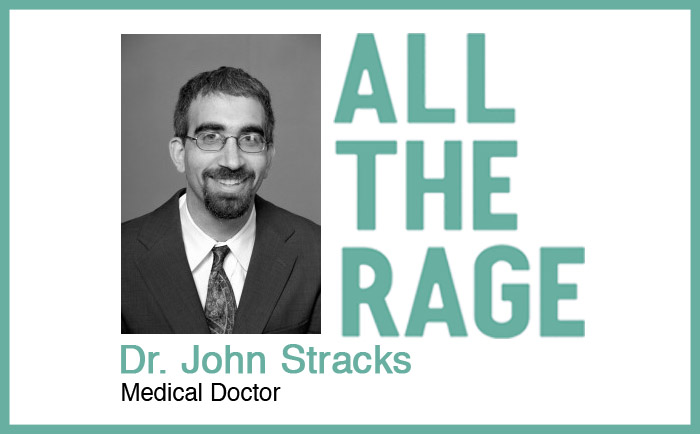24 Nov All the Rage Doctor Spotlight Dr.Stracks
 What interested you in mind body related medicine?
What interested you in mind body related medicine?
I had my own pain issues many years ago, even before I went to medical school, that I managed to solve by reading Dr. Sarno’s book and doing the writing exercises is Dr. Schechter’s workbook. Every since I discovered that the body could express what the mind wasn’t able to, I made a pledge that I would do what I could to help treat patients in this quite effective way.
How often, in your opinion, are patients misdiagnosed each year, and how can we put an end to this?
Most estimates are that about 50% of the physical disorders that come into physicians’ offices is related to psychology rather than physiology. We’re trying to continually make both patients and physicians aware that our bodies express for us what doesn’t get expressed in other ways and so even disorders that feel physical can be related to what is going on in people’s lives rather than what is going on in their bodies. It’s a long road, but continuing to get the message out, through your movie, through lectures to physicians, through lectures to patients, through books, and through workshops is how eventually we’ll get the type of treatment (psychological) to the people who need it (people with mindbody diseases).
What, In your opinion is the most important part of starting the journey to recovery?
By far the most important part of getting started is recognizing that just because something feels physical doesn’t mean that the problem originates in the body. As human beings, we constantly express with our bodies what doesn’t get expressed in other ways. Once an individual realizes this, they’re over ½ way to being healed. Once the concept sinks in, there are lots of things (journal writing, psychological therapy, thinking psychologically, self-talk, cognitive therapies, etc) that can be done to get the symptoms to go away, but recognizing the connection between mind and body is by far the most important first step.
Every individual is different, and every patient is also unique, how does this apply to recovery?, Is recovery a one method fits all, or do you have to contour a method for each person?
Every individual is unique and so there is no one-size-fits-all method of recovery. Some people need to deal with the stress going on in their lives. Other people need to heal past traumatic experiences. In some people the pain is related to strong emotions that aren’t being expressed. Other people are stuck in physical thinking and need to learn to think psychologically about their symptoms. For some people, it’s too much attention to physical signals in the body. Others feel badly because they have too much self-criticism in their minds. Still others have pain in relation to personality traits such as perfectionism, do-goodism, or not enough self-care. For lots of people it’s a combination of some of these things. Getting better for each individual means recognizing what’s triggering their own symptoms and then learning tools that help make the pain go away.
How do you think modern medicine is doing in treating TMS? Is there anything you would change about our current healthcare system?
TMS still is not widely recognized by the conventional medical system. We need to train physicians to see when factors in people’s lives are leading to pain in the body and then give them the language to explain this to patients in ways that are non-threatening and empathic. We don’t want patients to think physicians are saying the pain is imaginary or in their head because that’s not true. The pain is in the body, it’s just that often times the source of the pain is in the heart or in the mind. It will be helpful also for patients to know about the possibility of a mindbody so that they can raise the question with their physician. That’s why it’s so important to raise public awareness of TMS through the movie and other means of getting people to learn about TMS.

No Comments